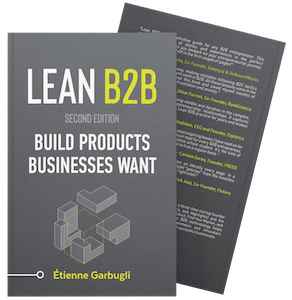One of the reasons why I love B2B is that products with predictable and calculable ROI literally sell themselves. For a large company, buying a solution that saves $500,000 a month is a near no-brainer.
However, it’s not because your company helps save $6M a year that you can charge that amount. You have to align your pricing with the metrics businesses use and there’s only a part of the pie that you can get.
To overcome the “Status Quo Coefficient” and mitigate the risk of adopting new technology, your product should be at least two times faster, two times better and two times cheaper than the known alternatives.
Your solution must provide must-have value because, even if enterprise customers have good reasons to be unhappy with their technology vendors (due to lack of innovation, price gouging, poor support or other reasons), their daily activities run on those technologies.
You must reduce risk, provide exceptional value for each of your buying influencers and convince them of the urgency of fixing the problem. Risk — or the perception of risk — reduces the perceived value of your technology.
Convincing a company to change technology is hard. Training costs, inefficiency costs and B2B risks must be factored in. For that reason, solutions that don’t disrupt business operations are the easiest to get adopted.
DJ Patil, Ex-VP of Product at RelateIQ (Acquired by Salesforce in 2014) coined the term “Zero Overhead Principle,” which states that no feature may add training costs to the user. Solutions that respect this principle are way easier to implement.
Put all the chances on your side. Increase perceived value and reduce risk to get a fair shot in the enterprise market.
More on B2B Risks
- How to Use The Customer Discovery Process to Reduce Your Startup’s Risk
- Risk Identification: How Much Risk Are You Really Taking on With Your Startup?
- The B2B Startup Risk Scale: A Free Tool to Evaluate Your Startup’s Risk
Download the First 4 Chapters Free
Learn the major differences between B2B and B2C customer development, how to think about business ideas, and how to assess a venture’s risk in this 70-page sampler.
Working on a B2B Startup?
Learn B2B customer development with our free email course:



